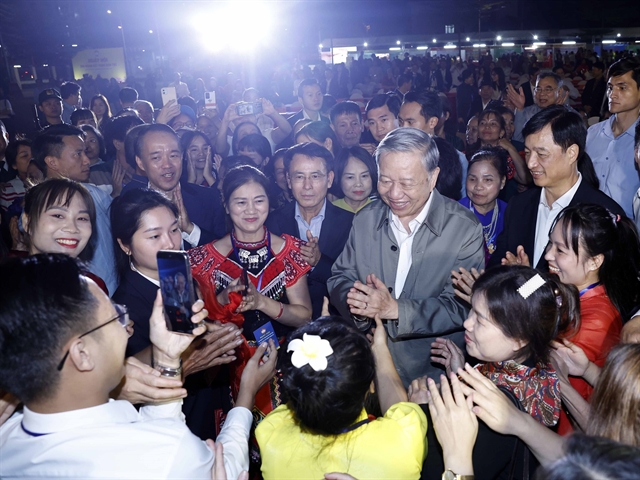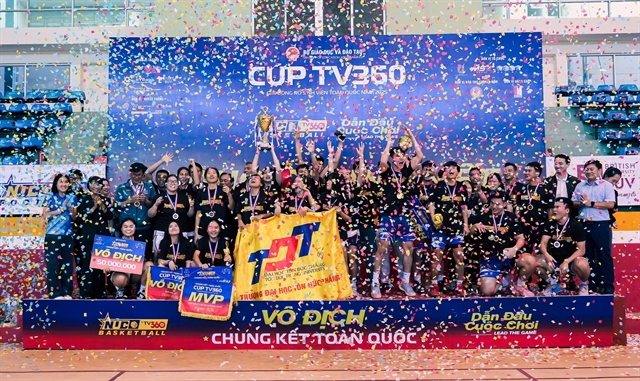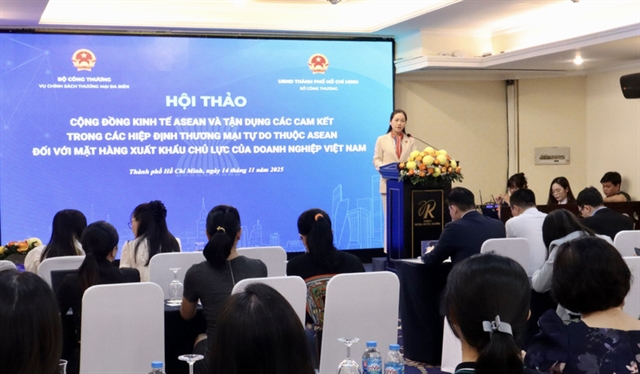 Economy
Economy
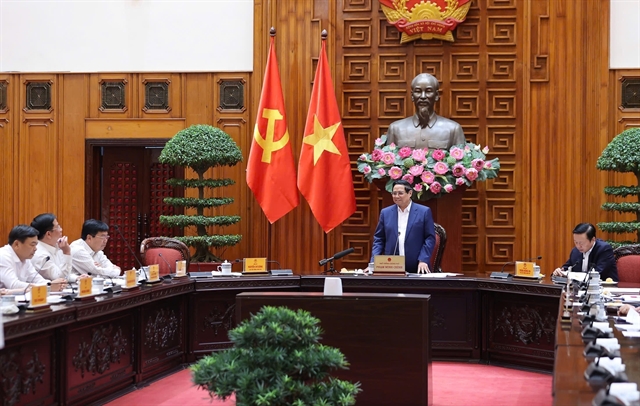
Foreign direct investment (FDI) capital is a major driver of Việt Nam’s economic development. On the sidelines of the Việt Nam Economic Forum 2019 held last week, Kyle Kelhofer, IFC Country Manager for Việt Nam, Laos and Cambodia, and Ganesan Ampalavanar, CEO of Nestle Việt Nam, spoke to Viet Nam News reporter Nguyễn Linh Anh about opportunities to leverage FDI and strengthen links with domestic firms.
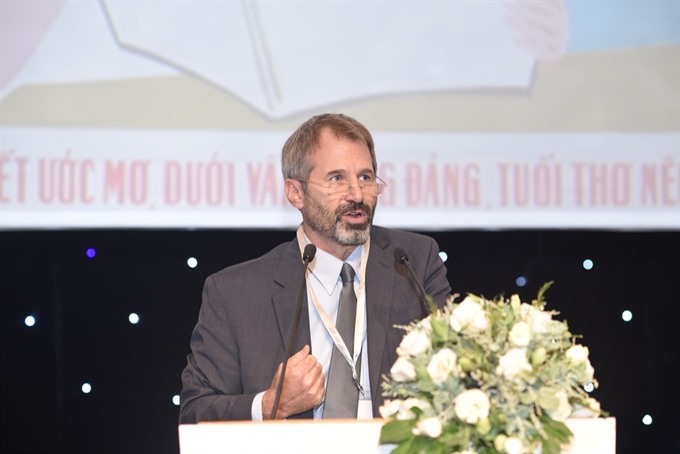 |
| Kyle Kelhofer, IFC Country Manager for Việt Nam, Laos and Cambodia. — Photo ndh.vn |
HÀ NỘI — Foreign direct investment (FDI) capital is a major driver of Việt Nam’s economic development. On the sidelines of the Việt Nam Economic Forum 2019 held last week, Kyle Kelhofer, IFC Country Manager for Việt Nam, Laos and Cambodia, and Ganesan Ampalavanar, CEO of Nestle Việt Nam, spoke to Việt Nam News reporter Nguyễn Linh Anh about opportunities to leverage FDI and strengthen links with domestic firms.
Kyle Kelhofer, IFC Country Manager for Việt Nam, Laos and Cambodia
What do you think about FDI attraction in Việt Nam?
FDI has become a major driver of Việt Nam’s economic development. Competitive wages, a stable political and economic environment, sound infrastructure, a favourable geographic location as well as a robust investment and trade policy framework have led to dramatic increases in FDI inflows.
FDI contributes about 18 per cent of Việt Nam’s GDP, nearly a quarter of total investment and more than two thirds of total exports and millions of direct and indirect jobs.
In 2016, FDI into Việt Nam exceeded inflows into all other ASEAN countries, except Singapore. As a percentage of GDP, Việt Nam’s FDI inflows exceed those of China and India (and all large ASEAN countries, except Malaysia). The year 2017 also witnessed a record in FDI disbursement (US$17.5 billion) against a backdrop of global declines in FDI flows of 23 per cent in 2017.
Việt Nam is an investment destination of leading global market players such as Samsung, Intel, LG, Mitsubishi and General Electric (GE). More than 50 per cent of Samsung’s global smartphone production takes place in Việt Nam. The country is also host of GE’s global centre for wind turbine production and is one of only three global manufacturing sites for Intel.
Besides capital investment, FDI is also bringing frontier technologies, management capacity and market knowledge to Việt Nam, contributing to industrial upgrading and productivity growth.
While Việt Nam should be congratulated on these achievements, there remain significant opportunities to further leverage FDI and strengthen links with domestic firms for more spill-over effects and domestic value-added. To avoid the middle-income trap and achieve high income status, it is clear that Việt Nam requires a next-generation FDI strategy to leverage value-added and FDI spillovers to unlock the benefits FDI bring.
What are the barriers impeding Việt Nam from achieving higher value added and spill-over effects of FDI?
Việt Nam has reached a critical juncture. The integration of local firms in the global value chain is, more or less, conspicuous by its absence. FDI to date is largely driven by the promise of low labour costs and generous tax incentives. The FDI sector has weak linkages with local suppliers and SMEs.
Low share of parts are sourced locally by FDI firms. Japanese investors sourced only 32 per cent of their inputs from suppliers in Việt Nam, compared to 65 per cent for China, 55 per cent for Thailand and 40 per cent for Indonesia.
The barriers also include the lack of domestic qualified suppliers rooted in firm-level constraints, regarding innovation capacity, management capabilities and skills, a lack of industry-ready skills such as technical, language, soft and quality management skills and the absence of integrated local supply chains affecting the competitiveness of firms.
Numerous issues related to policies and the business climate also impede Việt Nam in realising the full potential of FDI. While the overall policy framework is clear, implementation is still weak and evidenced by the recurrence of challenges identified several years ago. Major horizontal and vertical weaknesses are not helping. Horizontal, such as extensive overlaps between ministries, manifest in lack of convening power and extensive fragmentation as a result of poor co-operation and co-ordination. Vertical, such as ineffective co-ordination and synchronisation along with potentially wasteful overlaps between national and sub-national levels, perpetuate a race to the bottom scenario when it comes to incentives.
What should a next-generation FDI strategy focus on to help maximise value-added and benefits that FDI bring?
The next-generation FDI strategy should shift its focus from attracting the “right investors” for Vietnamese products (i.e. investors who only take advantage of what Việt Nam currently offers such as incentives, low labour cost) to developing the “right products” (e.g. right policies, environment) for the type of investment Việt Nam needs to attract.
It prioritises the development of products which have a competitive advantage and possibilities to join in the production network and global value chain in such industries as high technology, ICT and pharmaceuticals.
Under the new strategy, investors’ primary motivations when investing in Việt Nam would change from low labour costs, low-cost utilities and risk-diversification alternative to China to high labour skills, resource-efficient technologies and superior location within ASEAN free trade deals.
Besides, the exponential growth of sectors like Fintech, wearable technology, artificial intelligence, robotics, drones and the impact of disruptive technologies are all evidence that continuous “market sensing” and agility are required to stay competitive as an FDI destination, including an ability to create conditions for new industries to flourish in Việt Nam.
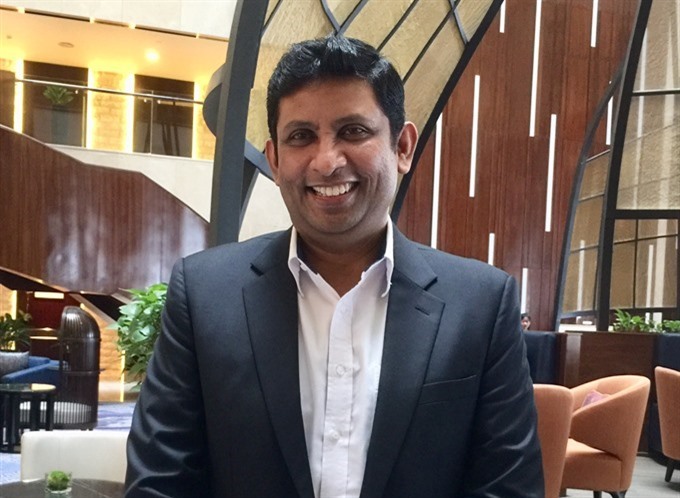
Ganesan Ampalavanar, CEO of Nestle Việt Nam. — VNS Photo Linh Anh
Ganesan Ampalavanar, CEO of Nestle Việt Nam
The 11-member Comprehensive and Progressive Agreement for Trans-Pacific Partnership (CPTPP) has officially come into force, to what extent is this meaningful to the private sector and FDI companies?
Việt Nam will benefit from not only CPTPP but also other free trade agreements. The agreement brings about numerous opportunities as well as challenges for the whole country in general and the business community in particular. But we should no longer be cheapest because if we only play on price and don’t develop value added as well as improve quality, the price advantage someday can go to someone else who can offer lower costs than Việt Nam. We need to move up the value chain, with an emphasis on local linkages, value addition, skills and innovation.
Nestle Việt Nam has been very successful in connecting businesses and households to the production chain/processing factories. Could you tell us about this experience?
Nestle Việt Nam now consumes 20-25 per cent of Việt Nam’s total coffee, which is quite a high proportion. Generally we don’t have to import coffee as all coffee used in our production line is all sourced locally. When consuming coffee from farmers, we need to set the standards of what we want, the more we tell farmers what kind of quality we want, we can have more standardised products.
We provided practical examples to help coffee farmers improve their productivity and income through applying new techniques and technologies. We have invested in technology that helps farmers track and record their entire farming process, which includes managing pests and diseases, concentrating on post-harvest quality, and ensuring the clean storage of the beans. We have seen a huge improvement in farming practices and coffee quality and we are very proud of the achievements so far.
Do you think that the fourth industrial revolution with a focus much on automation would lead to many jobs in your companies being replaced by robotic automation?
Not necessarily. Everyone is talking about the fourth industrial revolution but it is not like you switch the button and everything suddenly becomes 4.0. It is a gradual development process. For example, in the future Nestle Việt Nam will invest more and more in technology and innovations, our system will surely be more automotive, but our data and information will also be increased a lot, which requires more labour to handle all the work. We need more people to collect data, to analyse data. Therefore, we do all of this process in a gradual and sustainable way. — VNS

